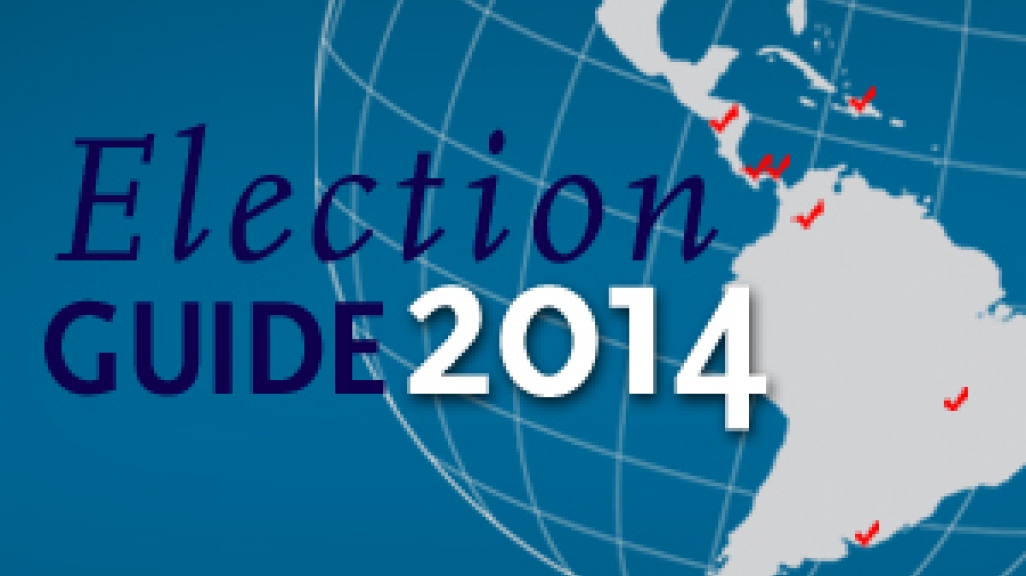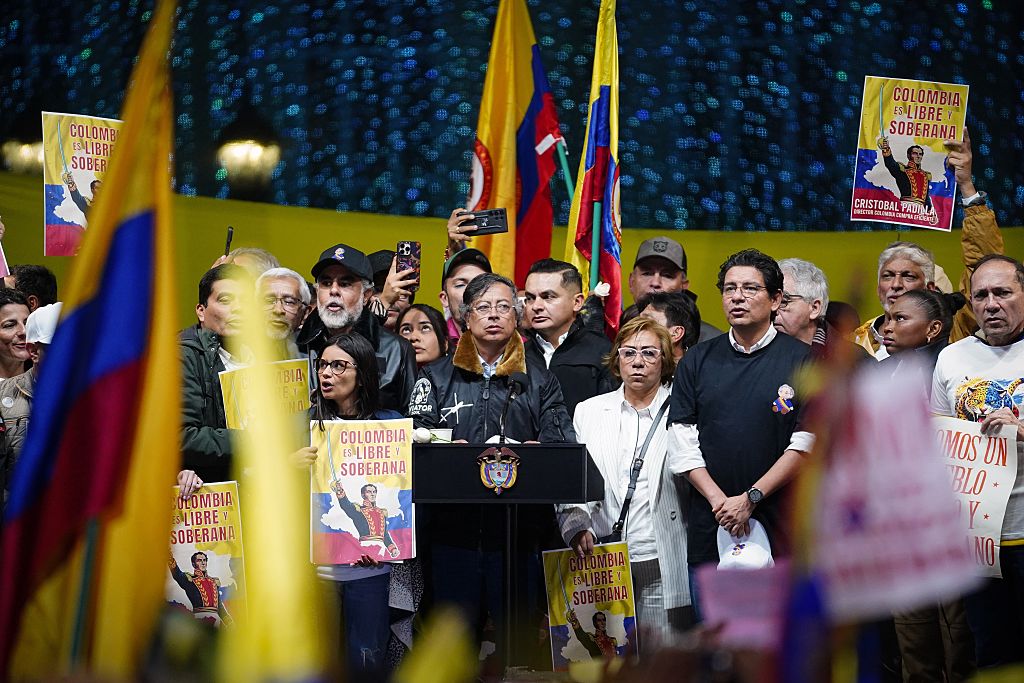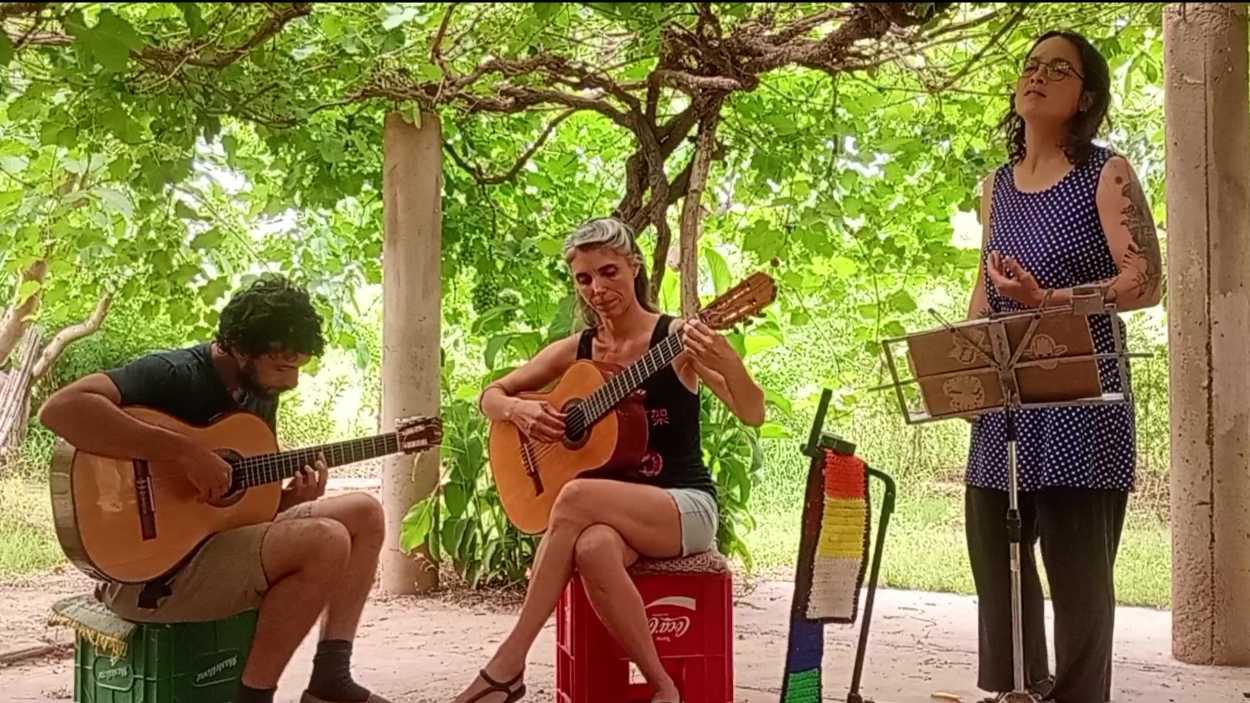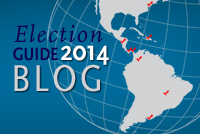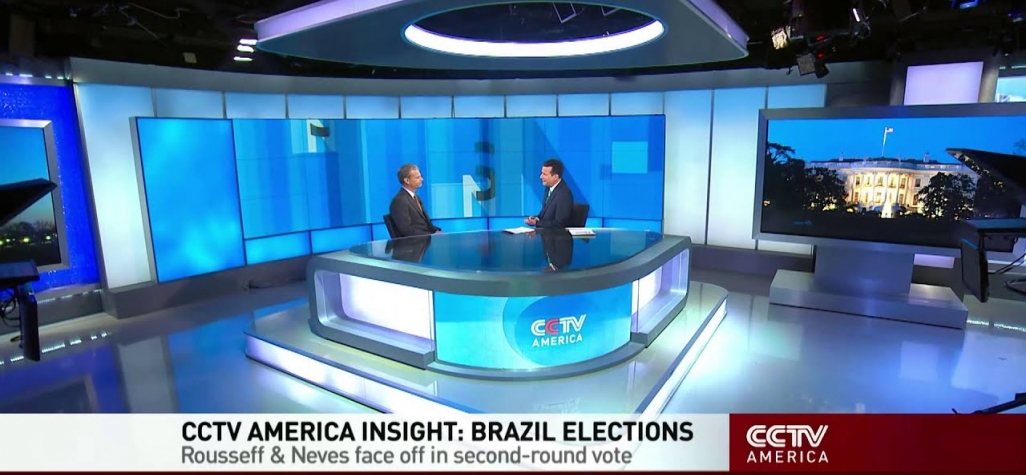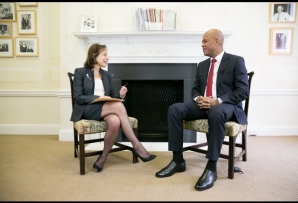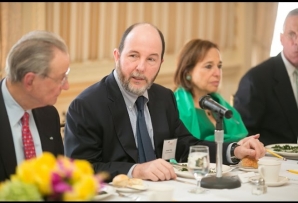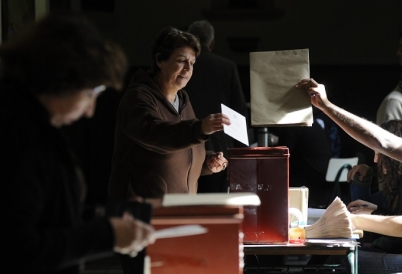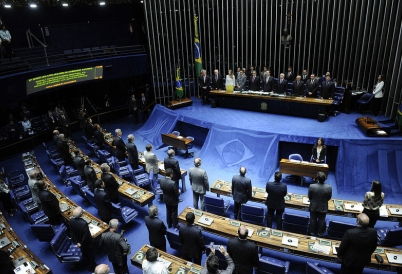Guide: 2014 Elections in the Americas
Guide: 2014 Elections in the Americas
Eight countries in the Western Hemisphere will hold national-level elections in 2014:
|
Collectively, these countries represent around 60 percent of the population of the Western Hemisphere. Voters will elect seven presidents and 1,699 legislators in total. AS/COA Online presents an overview of the region’s federal elections in 2014, along with the latest analysis, results, multimedia, and expert perspectives.

Costa Rica
Type: Presidential and Legislative
First Round: February 2, 2014
Runoff: April 6, 2014. A second round is held if a candidate fails to win more than 40 percent of votes during the first round. During the second round, the victor wins by a majority.
Inauguration: May 8, 2014
Number of Seats: In addition to the president, 57 members of Costa Rica’s unicameral Legislative Assembly will be elected for four-year terms. Reelection is allowed, but consecutive terms are not.
Terms: Presidents serve four-year terms and can be reelected, but cannot serve consecutive terms.
El Salvador
Type: Presidential
First Round: February 2, 2014
Runoff: March 9, 2014. If none of the candidates achieve an absolute majority (50 percent of the vote plus one), a second election is conducted no later than 30 days later. The candidate who garners the most votes wins the second round.
Inauguration: June 1, 2014
Terms: Presidents are elected for five-year terms without the possibility of consecutive re-election.
Colombia
Type: Legislative
Election Day: March 9, 2014
Number of Seats: The Senate holds 102 seats while the Chamber of Deputies houses 166. All seats are up for grabs each election cycle.
Start of Legislative Session: Elected officials will take office on July 20.
Terms: Colombia’s senators and representatives can serve an unlimited number of four-year terms.
Panama
Type: Presidential and Legislative
Election: May 4, 2014
Presidential Election: There is only one round of voting in the presidential election. The candidate who receives a plurality of votes takes office. Presidents are elected for five-year terms and must wait two terms to be eligible for reelection.
Inauguration: July 1, 2014
Number of Seats: 71 representatives in Panama’s unicameral Legislative Assembly will be elected for five-year terms, along with the president.
Terms: Presidents are elected for five-year terms and must wait two terms to be eligible for reelection. There are no term limits for National Assembly members.
Colombia
Type: Presidential
First Round: May 25, 2014
Runoff: June 15, 2014. A second round is held if a candidate fails to win more than 50 percent of votes during the first round. During the second round, the victor wins by majority.
Inauguration: August 7, 2014.
Terms: Presidents serve four-year terms, with the possibility of consecutive reelection.
Brazil
Type: Presidential and Legislative
First Round: October 5, 2014
Runoff: October 26, 2014. A runoff takes place if a candidate fails to receive more than 50 percent of the vote. The winning candidate in the second round must win an absolute majority.
Inauguration: The president takes office on January 1, 2015. The new legislative session starts on February 1, 2015.
Number of Seats: There are 513 seats in the Chamber of Deputies and 81 spots in the Senate. Deputies serve four-year terms, and all seats are up for a vote in 2014. Senators serve eight-year terms; a third of seats are up for a vote in 2014.
Terms: Presidents serve four-year terms with the possibility of consecutive reelection.
Bolivia
Type: Presidential and Legislative
First Round: October 12, 2014
Runoff: December 7, 2014. A runoff takes place if a candidate fails to win more than 50 percent of the vote, or 40 percent of the vote with a 10 percent lead over the second-place candidate. In a runoff, the candidate who gains the majority of the vote wins.
Inauguration: The president and legislators take office on January 22, 2015.
Number of Seats: The Chamber of Deputies will fill all 130 seats for five-year terms, and the Senate will elect all 36 members for five-year terms. Members of Congress are eligible for one consecutive reelection.
Terms: Presidents are permitted one consecutive reelection. However, in May 2013 a law was passed allowing President Evo Morales to run for reelection a second time.
Uruguay
Type: Presidential and Legislative
First Round: October 26, 2014
Runoff: November 30, 2014. A runoff is held on the last Sunday of November of the same year if no candidate garners an absolute majority in the first round.
Inauguration: March 1, 2015
Number of Seats: In Uruguay’s bicameral National Legislature, 30 senators and 99 representatives will be elected for five-year terms. There are no term limits for either the upper or lower houses. Also, the vice president serves as an ex officio member of the Senate, bringing to total number of senators to 31.
Terms: Presidents are elected for five-year terms, and may be re-elected but not for consecutive terms.
United States
Type: Legislative
Election Day: November 4, 2014
Number of Seats: All 435 seats are up for election in the House of Representatives, as well as 33 of the 100 Senate seats.
Start of Legislative Session: Newly elected legislators will take office on January 3, 2015.
Terms: Representatives are elected to two-year terms, with all seats up for grabs each election cycle. Senators, on the other hand, serve six-year terms with one-third of Senate seats up for renewal every two years. There are no congressional term limits in the U.S. Congress.
Editor's note: This guide originally incorrectly stated that seven countries in the Americas will hold elections in the 2014. As of the start of 2014, the number of countries with national elections planned is eight, with seven presidents and 1,699 legislators to be elected across these countries. This guide also incorrectly stated that Panama's presidential inauguration is September 1; the correct date is July 1. This guide was updated on May 2 to reflect Bolivia's exact election dates, announced on April 30.
2014 Election Guide Blog
AS/COA Online looks at the latest poll numbers, the leading presidential candidates, and election issues in the countries in the Americas holding federal-level elections in 2014.
2014 Election Blog: Brazil's Presidential Runoff
President Dilma Rousseff narrowly defeated Senator Aécio Neves on October 26.
Updated October 27, 2014—Get updates on Brazil's presidential runoff, taking place October 26. Also, explore our recent coverage to get an overview of the election, candidates, polls, and more:
- Learn more about what's been happening on the campaign trail in our election blog.
- Check out our election guide, which includes important dates and facts about the vote.
- View our infographic with a rundown of numbers about the election.
2014 Election Blog: Latino Voting Bloc Grows, but Turnout Low
Voter turnout among the United States' Latino electorate remains lower than that of other blocs, but could increase as its young population ages.
More U.S. Latinos than ever are eligible to vote in this year's midterm elections, with a record 25.2 million Latino adult citizens living in the country. The approaching November 4 midterms have spurred discussion over Latinos' clout in national politics, spotlighting a voting trend: turnout among Latinos is lower than other demographic groups. In the last midterm election in 2010, Latino turnout was nearly 13 percent below that of blacks and 18 percent below that of whites. But, while turnout is expected to remain low in the short term, the future impact of the voter bloc could change, given that it is projected to account for 40 percent of growth in the national electorate in the next two decades.
Low turnout levels among Latinos stem from two primary factors: the relative age of the Latino electorate and their concentration in states and districts deemed non-competitive, which diminishes voters’ sense of needing to vote.
“The youth of the Hispanic electorate, in particular, is worth noting,” says Jens Manuel Krogstad, a writer and editor for Pew Research Center's Hispanic Trends Project, in an email. “This year, one in three…Hispanic eligible voters are ages 18 to 29, compared with 18 percent among whites, 25 percent among blacks, and 21 percent among Asians.” Krogstad says young people in general are less likely to vote, regardless of their ethnicity. The tendency's effect on Latino turnout is clear: in 2012, only 37 percent of Latino citizens ages 18 to 29 voted, compared to 48 percent of all Latino citizens and 62 percent of eligible voters nationwide.
Several nonpartisan organizations have launched get-out-the-vote campaigns to respond to the low turnout rates, including Voto Latino, which targets young Latinos. Two groups, National Council of La Raza and Mi Familia Vota have registered 80,000 voters in 2014, a number that exceeds the amount registered ahead of the 2012 presidential election. Similar campaigns have seen success in recent years: between the elections in 2010 and 2012, the number of registered Latino voters grew from 11 million to 23.7 million, a 24 percent increase. In contrast, the number of eligible Latino voters grew 9 percent.
Krogstad says low turnout levels may change as young Latinos age, since voter participation levels typically rise with age for all other demographic groups. “Also, the map of specific national elections could be different in the future than they are today,” Krogstad said. “That means that Latinos may play a bigger role in future elections if states like California or Texas become important in presidential elections.”
But some say an increase in turnout is unlikely when the November 4 midterm comes around. Latino turnout is already especially low during off-year elections like November's—just 31.2 percent of eligible voters cast their ballots in 2010. Additionally, disenchanted Latino voters may stay home following President Barack Obama's September reversal on a promise to executively enact comprehensive immigration reform, according to The Los Angeles Times. Plus, new voter ID laws in several states could hinder Latino voters. On October 18, the U.S. Supreme Court upheld a voter ID law in Texas, home to approximately 3.8 million eligible Latino voters. In her dissent, Justice Ruth Bader Ginsberg wrote that the law "may prevent more than 600,000 registered Texas voters (about 4.5 percent of all registered voters) from voting for lack of compliant identification...[and] a sharply disproportionate percentage of those voters are African-American or Hispanic.”
Poll Update: Despite Overall Tie, Rousseff Makes Gains amid Women, Wealthy
Brazil’s president faces a tight runoff race against Aécio Neves on October 26.
Ahead of Brazil’s October 26 presidential runoff, the two candidates remain deadlocked in the polls. The latest Datafolha survey shows President Dilma Rousseff statistically tied with Aécio Neves, placing the president at 52 percent and Neves at 48 percent with a 2 percentage-point margin of error. When accounting for overall voter intention, around 5 percent plan to vote null or blank, and 4 percent are undecided. Nevertheless, the president saw gains over the past month in key demographics, including women and the upper class.
Since Datafolha’s October 9 poll, Rousseff has gained among female voters, while Neves lost ground among youth. Among women, Rousseff gained five points, while Neves lost five. The Workers’ Party (PT) campaign has sought to cast Neves as anti-women, given his accusations about the president during recent debates. The October 22 Datafolha survey showed 36 percent of voters find the Brazilian Social Democracy Party candidate more aggressive in his campaign.
Though Neves leads among the country’s young voters, he saw waning support this month. Among 25- to 34-year-olds, Neves lost five points since Datafolha’s October 9 survey, while Rousseff gained one. Among the youngest voter bloc of 16- to 24-year-olds, Rousseff rose three points over the same period, and Neves dropped by the same amount.
From October 9 to 21, the president saw an increase in support across the board when it comes to income levels, with the largest gain in the highest income category. Neves, meanwhile, saw his support go down across all four income levels. Regionally, the president maintains a comfortable lead in the north and northeast, traditionally strong for the PT. In the southeast—which includes the battleground states of Minas Gerais, São Paulo, and Rio de Janeiro—Neves leads by 8 points.
In Brazil, voting is mandatory, and voters can choose to cast a blank vote if they decide not to pick a candidate. Datafolha found that 46 percent of voters wouldn’t cast a ballot at all if voting were optional, and that around 55 percent oppose mandatory voting.
2014 Election Blog: Uruguay's Education Woes Take Center Stage in Presidential Race
Education reform is a top campaign issue due to poor performance and grade repetition among Uruguay's high school students.
The latest polls in Uruguay's presidential race forecast a close runoff between former President and Broad Front party candidate Tabaré Vázquez and the National Party's Luis Lacalle Pou, a young federal deputy who won his party's candidacy in a surprising primary vote. A scheduled referendum to lower the age of criminal responsibility has focused politicians' attention on insecurity as an issue of increasing concern to Uruguayans. But the presidential race is spotlighting another issue of central importance: education.
Uruguay is considered a regional leader in education. According to the 2012 PISA test, taken by 15-year-olds in 65 countries, Uruguay ranked third in Latin America in math and science, and fourth in reading. But PISA scores have steadily fallen, and an analysis by Infobae showed that the performance gap between the highest and lowest scores grew in each category from 2009 to 2012. In February 2014, a CIFRA survey found that 57 percent of Uruguayans thought their country's education system needed major changes, up from 48 percent in March 2013. Leading opposition candidate Lacalle Pou said Uruguay's education system faces an “emergency,” and named it as one of his top three concerns as president, along with security and infrastructure. All this presents a challenge to Vázquez, whose party has been in power for a decade and must defend its policies amidst what some describe as an “education crisis”—a claim Vázquez called “extremist.”
During the campaign, Vázquez has reminded voters of several significant changes made for students during his presidency from 2005 to 2010. For instance, he tripled funding for public schools and launched the Ceibal Plan, an initiative to provide every public primary student and teacher with free access to their own laptop computer. By the end of his administration, the government had distributed 380,000 laptops and trained 18,000 teachers to use computers. The ambitious plan drew international praise for its modern approach in addressing socioeconomic inequities among Uruguayan families, but its impact on the country's education system may be moot. A 2013 report from Uruguay's Institute of Economy found that access to the computers had no effect on students' reading and math levels over time.
Furthermore, the opposition says high rates of secondary grade repetition during the Mujica administration are a reason to question the ruling party's record on education. In 2013, 30.9 percent of students in the first three years of secondary school had to repeat a grade. The rate was worse in the capital of Montevideo: four out of every ten secondary students were held back.
In a televised debate between the candidates' proposed education ministers, the National Party's Pablo da Silveira said the Uruguayan education system was in “crisis,” citing the high repetition rates and Uruguay's declining PISA scores. In response, the Broad Front's Ricardo Vilaró argued that repetition rates similar to Uruguay's exist in countries throughout the region and should be addressed with greater investment in education than that of previous administrations. His party promises to increase public education funding to 6 percent of GDP. Another key element of Vázquez' platform includes lowering the age for universal preschool from four to three years old.
On the other hand, Lacalle Pou's proposed education plan involves decentralizing the education system, hiking teachers' salaries, changing school evaluation and inspection systems, and expanding the number of full-time schools. He and Da Silveira have also expressed their support for charter schools, which are run privately but use state funds.
Poll Update: Neves and Rousseff Neck and Neck ahead of Brazilian Runoff
Three polls place the candidates in a statistical tie in the race to win the presidency on October 26.
All signs point to a photo finish in Brazil’s October 26 runoff vote, with polls placing Senator Aécio Neves and President Dilma Rousseff in a dead heat. A Datafolha survey conducted October 14 and 15—the day of and day after a presidential debate—published yesterday gives Brazilian Social Democracy Party (PSDB) candidate Neves 51 percent of voter intention against 49 percent for the president, who represents the Worker’s Party (PT). With a two-point margin of error, the poll puts the candidates in a statistical tie. An Ibope poll—published yesterday and conducted October 12 through 14—gave the same results. A survey conducted over the past weekend by Vox Populi puts Rousseff ahead, with 51 percent of voter intention against 49 percent for Neves. Again, the margin of error ties up the PT and PSDB candidates. In the three polls, undecided votes ranges from 5 to 6 percent while blank votes range from 5 to 7 percent.
During the first-round vote on October 2, Rousseff won 42 percent of the vote and Neves earned 34 percent. But on October 12, Marina Silva, a former minister and environmentalist who finished third, threw her support behind Neves, the ex-governor of the state of Minas Gerais.
Based on the polls, who will win is anybody’s guess. But how the candidates fare in debates could play a role in the outcome, given that the two will spend more than four hours facing off before election day arrives. The first of the four debates took place Tuesday, and observers say neither candidate stood out as a clear winner, as Rousseff and Neves sparred over corruption concerns.
A possible tight race owes more to voters' desire for mild change than rejection of the current government, write AS/COA's Christopher Sabatini and Rebecca Bintrim in U.S. News & World Report.
Economic insecurity and middle class expectations played key roles in the country’s election results, writes COA’s Eric Farnsworth for U.S. News & World Report.
On October 5, voters elected the most conservative legislature since the post-1964 period, as well as a larger number of political parties.







